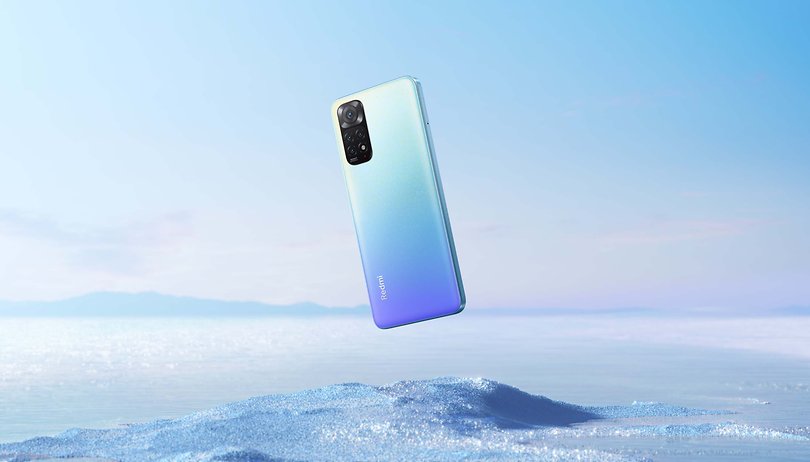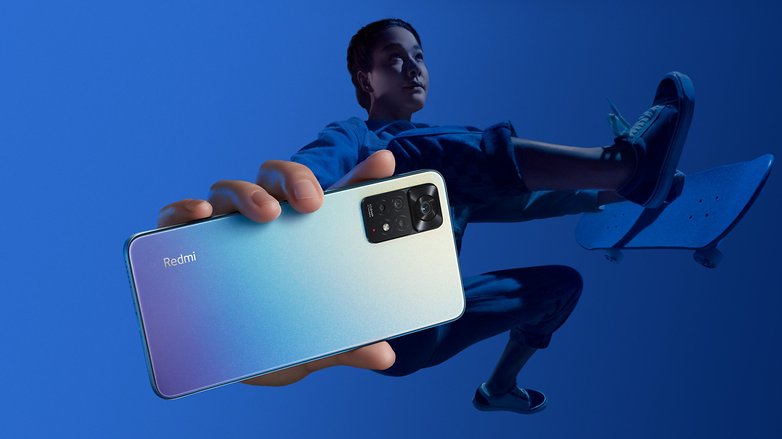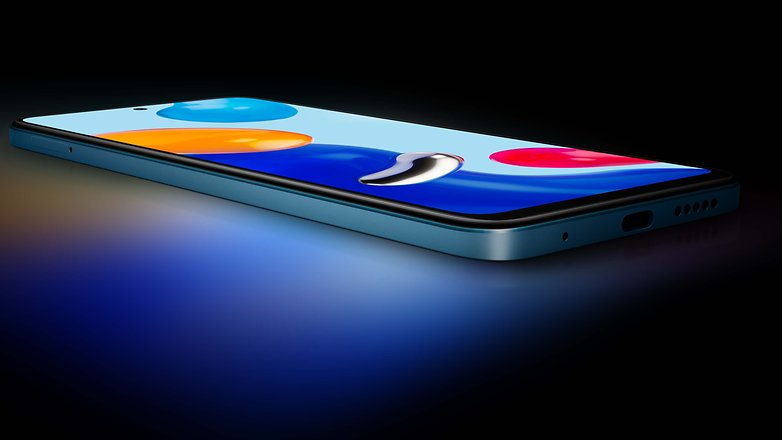Redmi Note 11 series unveiled: NextPit sheds light amidst the launch chaos!


Read in other languages:
Xiaomi has just launched its latest Redmi Note 11 series devices! True to Xiaomi's modus operandi, there are, once again, several models to choose from, where some of them differ in very few ways. My task today is to make sense of it all amidst the launch chaos so that it is easy and understandable for the average Joe and Jane. Let us lift up the curtains on the Redmi Note 11, Redmi Note 11S, Redmi Note 11 Pro, and Redmi Note 11 Pro 5G!
TL;DR
- Xiaomi has just unveiled its latest Redmi Note 11 series.
- Highlights: 5G model of the Pro variant, 67-watt quick charging and stereo sound.
- Also new: MIUI 13 and the Smart Air Purifier 4.
Xiaomi once again used the term "product presentation" today, causing "confusion" to everyone as usual. In addition to this little Pokémon joke, I'll tell you right away just which new devices are available alongside their respective innovations. To make everything nice and clear, I'll begin with a table that you can see below. Here are all the new smartphones from Xiaomi.
As you can see, Xiaomi finally offers its Pro model with a 5G SoC. This feature was still missing in its excellent predecessor, the Redmi Note 10 Pro. Since I find this model to be particularly exciting once again, let's take a closer look at it.
Redmi Note 11 Pro and Redmi Note 11 Pro 5G
First, the good news: Except for the 5G SoC, the two Pro models do not differ. You get a 6.67-inch AMOLED display with FHD+ resolution and a high sampling rate of 360 hertz in each case. The resolution stands at 2400 x 1080 pixels in each case. With this large display, the smartphone measures just under 164 x 76 x 8 mm and tips the scales at 202 grams.
The back, which is available in the three colors "Graphite Gray", "Polar White" and "Star Blue", is still made of plastic. Both models are also protected against water and dust according to the IP53 certification and offer stereo speakers as well as a 3.5 mm headphone jack.

Xiaomi relies on a Snapdragon 695 chipset that is manufactured using the 6-nanometer process for the 5G model. Besides the Adreno 619 GPU, the SoC is also mated to 6 GB or 8 GB of LPDDR4X RAM and is paired to either 64 or 128 GB of UFS 2.2 storage. With the same memory configurations, the LTE model uses a MediaTek Helio G96 that works alongside the Mali G75 GPU. How the performance differs is best seen in the later review! Bluetooth 5.1 and NFC are available in both models.
The camera was especially exciting upon its launch last year, since Xiaomi ventured to make the leap to 108 megapixels as seen in the Realme 8 Pro. The manufacturer also continues from there and adds two more cameras that use Samsung's HM2 sensor and features f/1.9 speed for the main camera.
Since these comprise an ultra-wide-angle camera at 8 megapixels and a macro camera at 2 megapixels, there are no big surprises here. Unfortunately, there is no telephoto camera, but the selfie camera sports a 16 megapixel resolution.

Xiaomi has come up with a significant improvement for the battery this time around. Although it has a capacity of 5,000 mAh again, unlike in China, you can quickly recharge it at 67 watts. An included charger makes the deal sweeter, but you will once again have to make do without wireless charging.
Redmi Note 11
If you opt for the cheaper base model, the screen would shrink to 6.43-inches. Unfortunately, Xiaomi still relies on an LCD screen with a refresh rate of 90 Hertz instead of 120 Hertz. However, the 2400 x 1080 pixels resolution remains the same. Due to the smaller display, the Note 11 only measures 160 x 74 x 8 mm and is also a wee bit lighter at 179 grams. IP53 certification is also available here.

The Redmi Note 11 is not 5G-capable. Xiaomi will surely launch 20 more models over the course of the year! Just kidding, the Redmi Note 11 uses a Snapdragon 680, which works together with 4 GB or 6 GB of LPDDR4X RAM and 64 GB or 128 GB of internal UFS 2.2 storage. MicroSD cards will ensure that you can have up to 1 TB of storage space.
The Note 11 is the only model in the series that does not offer a 108 megapixel camera. Instead, there is a 50 MP main camera and a fast f/1.8 lens. Xiaomi pairs the shooter with an 8 MP ultra wide-angle shooter as well as macro and depth cameras, which will be more of an afterthought at 2 megapixels apiece. Selfies are taken with 13 megapixels.
While the Redmi Note 11 can hold a candle to the Pro models with its 5,000 mAh battery, it falls behind in terms of fast charging. Thus, the smartphone charges at a maximum of 33 watts. Like the Pro model, Xiaomi implemented two speakers here.
Redmi Note 11S
Xiaomi also offers an 11S that features the same chassis as the Redmi Note 11. It offers the same 6.43-inch LCD screen and has the same size and weight. However, there are differences in the processor used because a MediaTek Helio G96 will run proceedings from underneath the hood instead of the Snapdragon CPU. This means a lower clock speed, but it should offer a bit more power. However, the MediaTek chipset is not 5G-capable in this form either.
The 11S is also superior in terms of the cameras used. Instead of 50 megapixels, the smartphone boasts a 108 MP shooter, which is downscaled to 12 megapixels using the pixel binning process. Apart from the main camera, things look sparse here in this department as well. 8 megapixels for the ultra wide-angle and two additional cameras at 2 megapixels each. Apart from that, nothing changes in the S model.
Thus, it recharges the 5,000 mAh battery at 33 watts and offers the stereo speakers mentioned by Xiaomi as well. A 3.5 mm jack is also part of the package.
MIUI 13 and Air Purifier: What else is new from Xiaomi?
All smartphones presented will come preloaded with MIUI 13 right out of the box! That sounds exciting at first, but Xiaomi's latest version of its own Android skin is still based on Android 11, which is a significant drawback compared to the operating systems offered by its competition. On the one hand, Google introduced exciting new features in Android 12, and on the other hand, the unveiled smartphones offer a shorter update life cycle as a result.
In MIUI 13, Xiaomi introduces several new features, including Liquid Storage, Atomized Memory, and Focused Algorithms. Before I ask for your feedback on the new devices, there is one more thing to take note of: Xiaomi is also introducing the fourth version of the Smart Air Purifier with the new devices. For now, you can only buy the previous version in the US.
What do you think of the new smartphones? Is the Pro model the hoped-for benchmark model for the mid-range or are you disappointed? What do you think of MIUI 13, which is based on Android 11? Let me know in the comments!



















